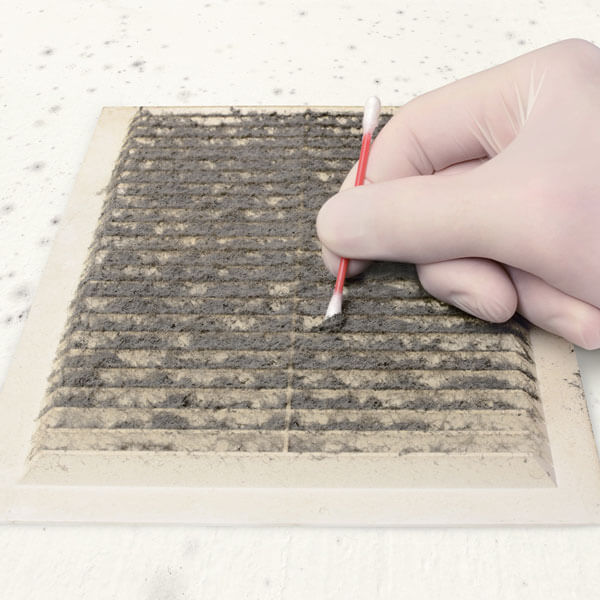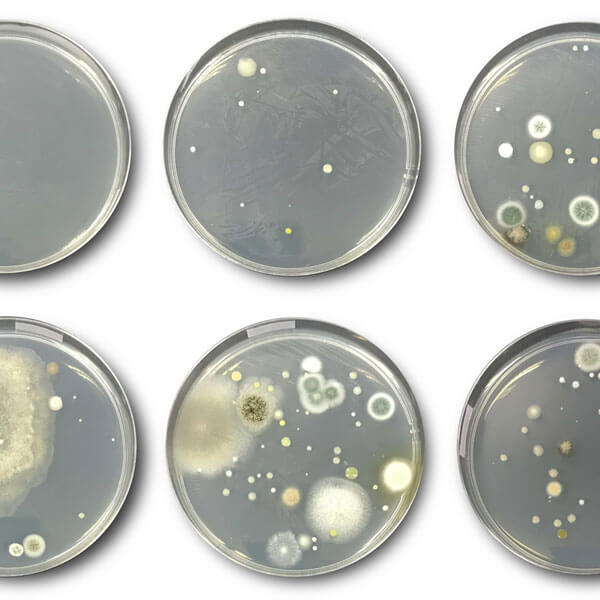IAQ / LEED Testing
Indoor Air Quality (IAQ) Testing Is Crucial for Assessing the Air Quality in Buildings and Ensuring Occupants’ Health and Comfort
IAQ testing involves various tests that measure pollutants and factors that can affect indoor air quality. Common tests include Volatile Organic Compounds (VOCs), Particulate Matter (PM), Carbon Dioxide (CO2), Relative Humidity (RH), Formaldehyde (FDA), Radon (Rad), Temperature and Airflow (TAF), and Radion (Rad). IAQ testing helps identify sources and levels of harmful pollutants, such as VOCs, PM, CO2, Formaldehyde, radon, and temperature imbalances. It also helps identify areas with poor air circulation and contributes to occupant comfort and indoor air quality. IAQ testing is essential for health and comfort, productivity and performance, regulatory compliance, building maintenance, and energy efficiency. Proper ventilation and IAQ strategies contribute to a healthy, comfortable, and safe indoor environment.

Mold and Fungi Testing:
Mold and fungi testing is essential for assessing indoor air quality, identifying potential health risks, and ensuring environmental safety. Common tests include air sampling, surface sampling, cultural sampling, Molecular Testing (PCR), and direct microscopic examination. Air sampling collects air samples from indoor spaces and analyzes them to determine the presence and concentration of mold spores and fungal particles. Surface sampling analyzes surfaces to identify mold and fungi types and concentrations, while cultural sampling encourages the growth of viable mold and fungal spores. Molecular testing (PCR) is a molecular technique that amplifies DNA or RNA sequences of specific mold and fungal species, identifying and quantifying their presence. Direct microscopic examination provides rapid preliminary results and aids in species identification. So, mold and fungi testing is essential for maintaining a healthy indoor environment, preventing health risks, and proactively addressing potential problems.
Formaldehyde and VOC Testing:
Formaldehyde and VOC testing are essential indoor air quality tests that measure the presence and concentration of formaldehyde and volatile organic compounds in indoor environments. Formaldehyde exposure can cause respiratory irritation, allergic reactions, and be a potential human carcinogen. VOC testing measures the concentration of volatile organic compounds in indoor air, which can contribute to indoor air pollution. High levels of VOCs can lead to health issues such as headaches, respiratory irritation, and exacerbation of allergies. VOC testing helps identify specific compounds and assess their potential impact on occupants, guiding remediation efforts and improving indoor air quality. Both tests help building owners, occupants, and professionals make informed decisions to improve indoor air quality, create healthier living and working spaces, and minimize the risk of adverse health effects associated with indoor pollutants.
Radon Testing:
Radon testing is a crucial procedure for assessing indoor air quality, focusing on measuring the concentration of radon gas in indoor environments. Radon is a radioactive and colorless gas that can seep into buildings from the ground, especially in areas with high levels of uranium in the soil. Prolonged exposure to elevated levels of radon gas can increase the risk of lung cancer, making radon testing essential for identifying potential health risks. There are two types of radon testing: short-term testing, which involves placing devices in the indoor environment for a brief period, and long-term testing, which uses sophisticated devices for several months to a year. Radon testing is important for health risk assessment, mitigation, and prevention. Long-term testing involves using sophisticated devices to measure radon levels over an extended period. Radon testing helps assess potential health risks, mitigate radon gas intrusion, and ensure regulatory compliance in areas with acceptable radon levels in indoor environments. By accurately measuring radon levels in indoor environments, occupants and property owners can take proactive steps to reduce the risk of lung cancer and create a healthier living and working environment.

Water Quality Testing:
Water quality testing is a crucial process that evaluates the safety, cleanliness, and presence of contaminants in water for various purposes, including drinking, recreational activities, and industrial use. Common tests include pH testing, turbidity testing, Total Dissolved Solids (TDS), Total Coliform and E. coli testing, Nitrate and Nitrite testing, Chlorine residual testing, Heavy Metal Testing (e.g., Lead, Mercury, Arsenic), Dissolved Oxygen (DO) testing, Algal Bloom Toxin Testing, and Temperature Testing. Photameters are essential for assessing water’s acidity, turbidity, Total Dissolved Solids (TDS), Total Coliform and E. coli, Nitrate and Nitrite Testing, Chlorine Residual Testing, Heavy Metal Testing, Dissolved Oxygen (DO), Algal Bloom Toxin Testing, and Temperature Testing. pH measures the acidity or alkalinity of water, while turbidity measures cloudiness or haziness caused by suspended particles. TDS measures the concentration of dissolved inorganic substances in water, which can affect taste, corrosion of pipes, and the effectiveness of water treatment processes. Water quality testing is crucial for human health, ecosystem health, public safety, regulatory compliance, and industrial and agricultural use. By assessing various parameters, water quality testing helps make informed decisions about water treatment, usage, and protection.
Allergen Testing:
Allergen testing is a crucial process that helps identify and quantify the presence of specific allergenic substances in various environments, such as indoor spaces, food, and other products. It helps manage allergies and ensure the safety and comfort of individuals sensitive to allergens. Common tests include allergen-specific immunoassays, skin prick testing, patch testing, component-resolved diagnostics (CRD), food allergen testing, indoor allergen testing, and research and regulation. Allergen testing is essential for diagnosing allergies, treating and managing reactions, prevention planning, quality control, and research and regulation. Accurate allergen identification enables healthcare professionals to recommend appropriate treatments, medications, and avoidance strategies. Indoor allergen testing assesses the presence of allergenic substances in indoor environments, promoting better indoor air quality and reducing allergic reactions. Overall, allergen testing is essential for better health outcomes, improved quality of life, and safer environments for sensitive individuals.
Lead Testing:
Lead testing is a crucial process that assesses the presence and concentration of lead in various environments, such as drinking water, soil, paint, and consumer products. Lead is a toxic heavy metal that poses serious health risks, especially to children and pregnant women. Common tests include lead paint testing, lead in water testing, soil lead testing, consumer product testing, and blood lead testing. Lead paint testing analyzes painted surfaces to determine lead-based paint, which is a significant source of lead exposure. Water testing collects water samples from faucets and pipes, ensuring safe water consumption. Soil lead testing assesses lead content in outdoor soil, particularly in areas near potential contamination sources. Consumer product testing tests products like toys, cosmetics, and household items for lead content, ensuring compliance with safety regulations and protecting consumers. Blood lead testing measures lead levels in a person’s bloodstream, guiding medical interventions and public health measures. Lead testing is essential for health protection, child development, safe environments, regulatory compliance, and public awareness. It helps create safe living conditions, protect public health, and prevent harmful effects of lead poisoning.
